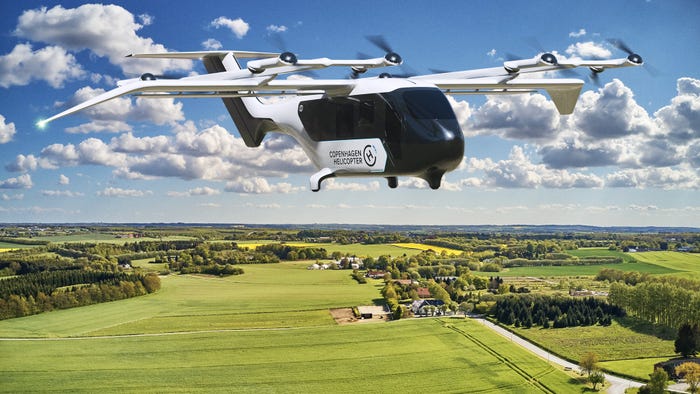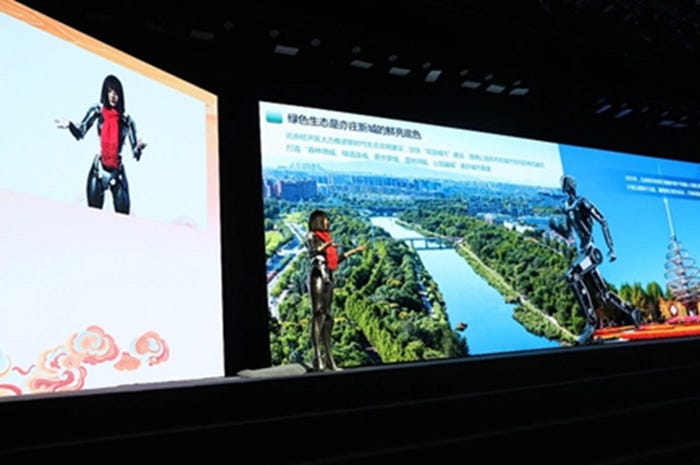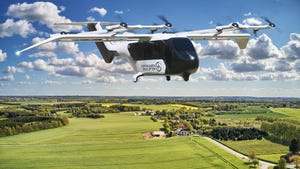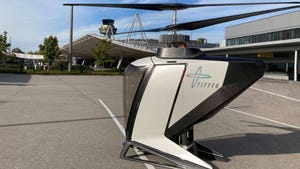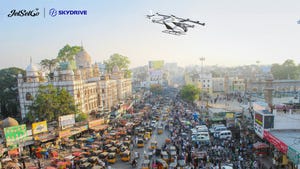Flying Car Company Starts Manufacturing Plant; 10,000 Units a YearFlying Car Company Starts Manufacturing Plant; 10,000 Units a Year
The plant in Guangzhou, China, is scheduled to produce the air module of the modular flying car

XPeng Aeroht in China has started construction of a large-scale flying car manufacturing plant designed to produce 10,000 flying vehicles a year.
The plant in Guangzhou, China, is scheduled to produce the air module of the modular flying car Land Aircraft Carrier.
XPeng Aeroht earlier this year introduced the Land Aircraft Carrier, a combination road vehicle with a flying component.
The six-wheel, three-axle ground vehicle, known as the mothership, carries the flying component inside it. The rear trunk, which stores the flying component, has a semi-transparent glass design, so the flying vehicle can be subtly visible.
To fly, that part of the vehicle totally detaches and becomes a standalone electric vertical takeoff and landing vehicle for low-altitude flights.
The air module is fully electric and supports both manual and automatic flying. It has six propellers and a panoramic cockpit.
The separation and reconnection mechanisms are automatic. Once detached, the six arms and propellers of the air vehicle unfold.
Once inside, the flying module is recharged by the mothership. The air vehicle is flown by joystick control or can be flown and landed autonomously.
The new manufacturing plant contains a composites shop, joint shop, painting shop, assembly shop and supporting infrastructure.
“This manufacturing base adheres to the principles of exquisite, intelligence and green, establishing a global benchmark for flying car production,” said Xpeng Aeroht founder Zhao Deli.
A preview event in Guangzhou in southern China earlier this year included a live demonstration of the air module flying. The flight module took off vertically from the grass, circled in the air and smoothly landed.
The company plans to deploy more than 200 air modules for a variety of tests including single-point failure tests for components including rotors, motors and battery packs.
The Land Aircraft Carrier is scheduled to make its first public manned flight at the China Airshow in Zhuhai in November and pre-sales are expected to start by the end of the year.
The land aircraft carrier also is intended for use in emergency services such as medical rescues, obstacle crossings, highway accident responses and high-rise evacuations.
For more flying vehicle and other embedded tech news subscribe to our free newsletter!
The first phase of deployment is to launch the flying car in restricted flying experiences and public service applications.
XPeng Aeroht has raised $150 million in a series B financing round, with plans to use the funds for the development, mass production and commercialization of Land Aircraft Carrier, according to Deli.
The manned air module of the eVTOL (electric vertical takeoff and landing) vehicle is being developed for users in China.
The electric aerial vehicle (EAV) maker, a subsidiary of Chinese electric vehicle maker XPeng Motors, has long planned to establish an intelligent, large-scale flying car factory.
The XPeng flying car, scheduled to launch after the Land Aircraft Carrier, drew attention when it was featured at CES earlier this year.
The flying car looks like a car with large propellers atop it with the wings folding up into the car for on-road driving.
XPenh has expanded its flight application network, with 60 flying car camps including general aviation airports, scenic spots, cultural and tourism towns and urban suburbs signed.
The company said it has developed an ultra-low-altitude multi-parachute rescue system for flight
The Land Aircraft Carrier model is more practical in the short term since the land and air components can be developed and treated separately.
XPeng raised $500 million in a series A financing round in 2021 and is backed by a consortium of investors, including Sequoia China, Eastern Bell Capital, GGV Capital, GL Ventures and Yunfeng Capital.
The company has conducted an autonomous test of its EAV with the two-seater X2 taking off, flying over buildings and landing, showcased in a video by the company.
A somewhat similar approach to flying vehicles is being taken by LuftCar in Orlando, Florida, at least in taking the approach of developing two separate vehicles.
LuftCar is developing a hydrogen-powered eVTOL vehicle. The flying component, called a flying forklift by the company, would attach to the land vehicle and then be able to fly it.
About the Author
You May Also Like


